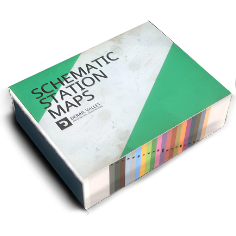Body Damage/zh-hant: Difference between revisions
Updating to match new version of source page |
No edit summary |
||
| Line 1: | Line 1: | ||
<languages /> | <languages /> | ||
{{pll|Rail Vehicle Types|車輛}}的車體{{pll|Damage Overview|受損}}的最常見原因為發生碰撞。以過高{{pll|Speed Limit Signs|時速}}與任何其他車輛、{{pll|Railway Terminology|止衝擋}},或任何物體接觸必然會造成損壞。 | |||
<div lang="en" dir="ltr" class="mw-content-ltr"> | <div lang="en" dir="ltr" class="mw-content-ltr"> | ||
Revision as of 10:45, 23 April 2025
車輛的車體受損的最常見原因為發生碰撞。以過高時速與任何其他車輛、止衝擋,或任何物體接觸必然會造成損壞。
Most common situations in which collision damage occurs is due to derailing, distracted shunting, badly set up switches and wheelslide. Body damage can also be caused by various powertrain failures that cause parts to fly apart, as well as fire and even explosions.
Damage to a vehicle's body may result in failure of various accessories, such as windows, lights and compressors. It doesn't otherwise affect the moving capability of a vehicle, however.
To ensure safe contact between vehicles, it is recommended to not come in contact at more than 5 km/h. To help anticipate contact better, there are proximity sensor gadgets.
Body damage of a vehicle is displayed on its ID plate.
Damaged vehicle bodies can be serviced.
Cars and cargo can be damaged from collisions too.
Body damage can be inflicted manually in sandbox mode, using the comms radio damage mode.
